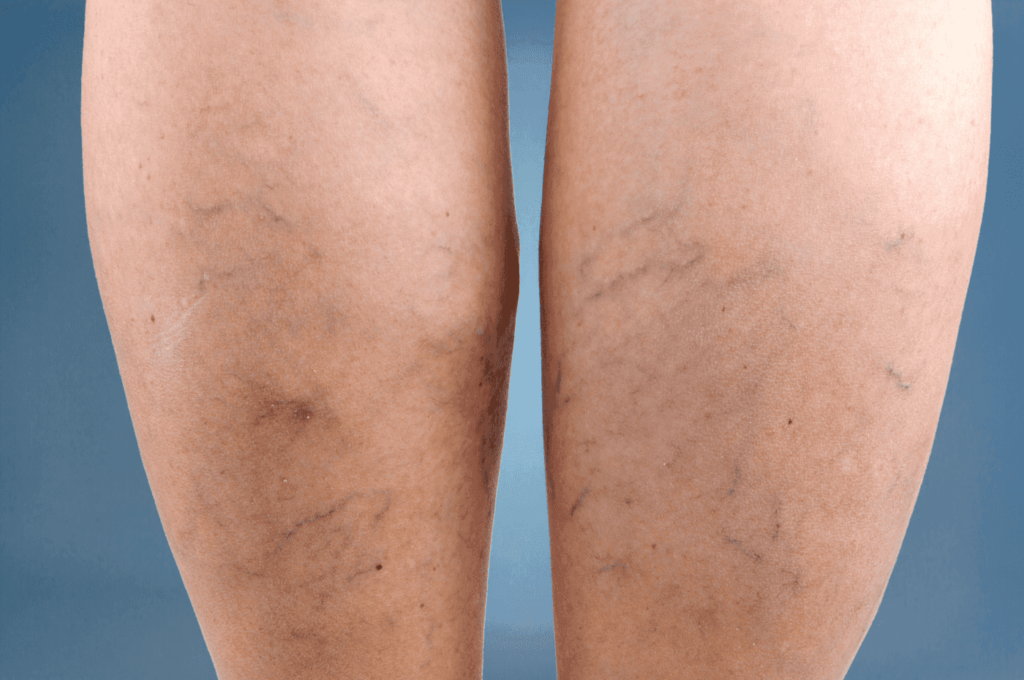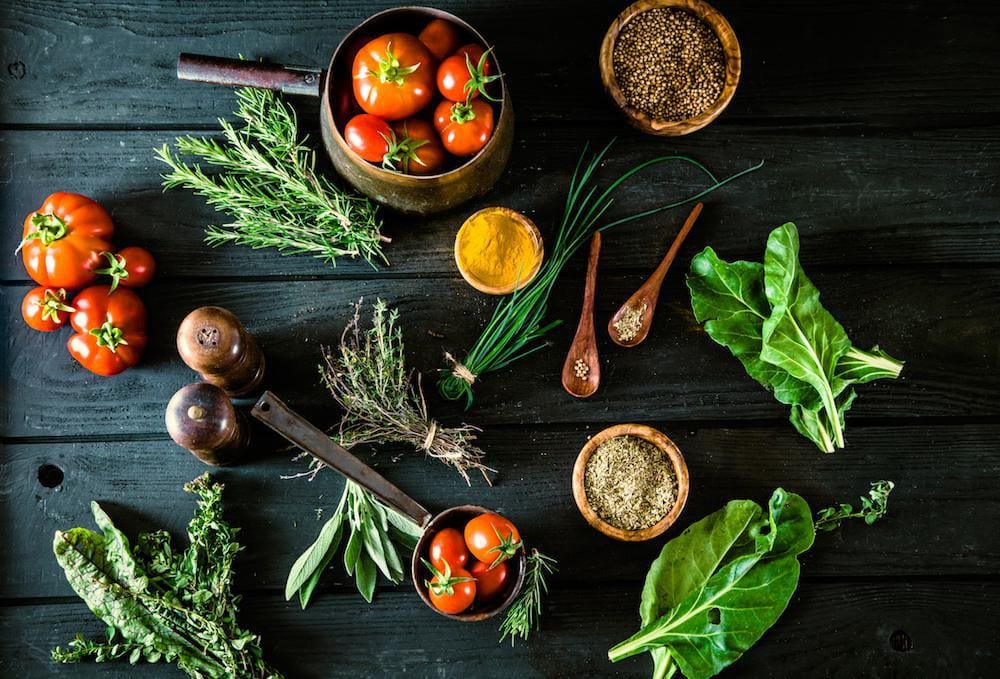
| Venous Insufficiency is a condition where the veins struggle to send blood back to the heart, often leading to varicose veins and swelling. Lifestyle factors such as prolonged standing or sitting, lack of exercise, and poor diet can accelerate its progression and worsen symptoms. If you’re experiencing these issues, schedule an appointment with Advanced Vein & Laser Center today for expert care and effective treatment options. |
Healthy veins are the unsung heroes of our circulatory system, silently working behind the scenes to return blood to the heart. But what happens when these vital vessels struggle to function properly?
Venous insufficiency, a condition where blood flow falters in the legs, can arise. While concerning, the good news is that understanding the link between your daily choices and vein health empowers you to take control and manage the condition effectively.
This guide delves into this crucial connection, unveiling how seemingly simple decisions can significantly impact your veins. We’ll explore how diet, exercise habits, and even vices like smoking influence venous health.
By equipping you with this knowledge, you’ll be able to make informed lifestyle modifications that not only prevent the onset of venous insufficiency but also manage its symptoms if you’re already diagnosed.
What Is Venous Insufficiency And What Causes It?
Venous insufficiency is a condition that occurs when the veins in the legs are unable to properly return blood to the heart. This can lead to a variety of symptoms and complications.
The primary cause of venous insufficiency is a breakdown in the valves within the veins, which are responsible for preventing blood from flowing backward. When these valves become damaged or weak, blood can pool in the legs and lead to the development of venous insufficiency.
Other factors that can contribute to the development of venous insufficiency include:
- Obesity
- Pregnancy
- A family history of the condition
- A sedentary lifestyle
Understanding the causes of venous insufficiency is important to prevent its progression and manage its symptoms.
What Are The Symptoms Of Venous Insufficiency?
Venous insufficiency can be sneaky. The symptoms often develop gradually and might seem minor at first. However, it’s important to be aware of the warning signs so you can address them early on.
Here’s a list of common symptoms to watch out for:
- Swelling in the legs and ankles: This is a telltale sign that blood isn’t flowing back to your heart properly. You might notice puffiness, especially around your ankles and feet, that gets worse later in the day or after prolonged sitting or standing.
- Aching or heaviness in the legs: Your legs might feel tired, achy, or heavy, especially at the end of the day. This discomfort can make it difficult to stand or walk for extended periods.
- Cramping or throbbing in the legs: Muscle cramps or throbbing sensations in your calves, especially at night, can be a sign of poor circulation due to venous insufficiency.
- Skin discoloration or changes: The skin on your lower legs might become dry, itchy, or develop a reddish or brownish discoloration. In severe cases, the skin can become thickened and scaly.
- Development of varicose veins: These twisted, enlarged veins are a classic symptom of venous insufficiency. They can be unsightly and sometimes cause pain or discomfort.
- Venous ulcers: In the most severe cases, open sores called venous ulcers can develop on the legs. These can be painful and difficult to heal.
The Role of Diet in Managing Venous Health
Maintaining a healthy diet can play a significant role in managing venous health and preventing the progression of venous insufficiency. Certain foods and nutrients can help improve blood flow and support the health of the veins.
A diet rich in fiber can aid in maintaining a healthy weight, which can reduce the strain on the veins. Additionally, foods high in antioxidants, such as fruits and vegetables, can help protect the veins from damage caused by free radicals.
It’s also important to limit the consumption of foods that can contribute to inflammation and poor circulation, such as processed foods, sugary drinks, and foods high in sodium. Making these dietary changes can have a positive impact on venous health and overall well-being.
Exercise and Its Effect on Venous Function
Regular exercise is essential for maintaining healthy veins and preventing the progression of venous insufficiency. Engaging in physical activity helps improve circulation, strengthen the muscles that support the veins, and reduce the risk of blood pooling in the legs.
Activities such as walking, swimming, cycling, and yoga can be particularly beneficial for venous health. These exercises promote blood flow and help prevent the development of varicose veins.
It’s important to consult with a healthcare professional before starting any exercise regimen, especially if you already have venous insufficiency or other underlying health conditions. They can guide the most appropriate exercises for your individual needs.
The Impact of Smoking and Alcohol on Venous Insufficiency
Smoking and excessive alcohol consumption can hurt venous health and contribute to the progression of venous insufficiency.
Smoking damages the blood vessels and reduces circulation, making it more difficult for blood to flow properly through the veins. This can increase the risk of developing venous insufficiency and other circulatory conditions.
Alcohol, on the other hand, can cause dehydration and lead to blood vessel dilation, which can put additional strain on the veins. It’s important to limit or avoid smoking and alcohol to maintain optimal venous health and prevent the worsening of venous insufficiency symptoms.
Venous Insufficiency Treatment Options
Venous insufficiency, while not curable, can be effectively managed through a variety of treatment options. Here’s a breakdown of some common approaches and their benefits:
A. Compression Therapy
Compression stockings or wraps are specially designed garments that apply gentle, graduated pressure on the legs. This pressure works by squeezing the veins and keeping them from bulging, which helps improve blood flow back to the heart.
- Reduces swelling in the legs and ankles
- Alleviates pain and discomfort
- Improves circulation
- May prevent the worsening of varicose veins
B. Lifestyle Changes
Embracing healthy lifestyle modifications is a cornerstone of managing venous insufficiency. Activities like walking, swimming, and cycling help pump blood back to the heart and improve overall circulation. Losing weight or maintaining a healthy weight can also significantly improve vein health as excess weight puts additional strain on the veins. Lastly, a diet rich in fiber and low in sodium can promote overall well-being and reduce inflammation, which can benefit vein health.
- Promotes overall circulation
- Reduces strain on the veins
- Aids in weight management
- Improves overall well-being
C. Sclerotherapy
Sclerotherapy is a minimally invasive procedure used to treat small and medium-sized varicose veins. A solution is injected directly into the affected vein. This solution irritates the vein lining, causing it to scar and collapse. Over time, the body absorbs the collapsed vein.
- Effective for treating small and medium-sized varicose veins
- Minimally invasive with minimal downtime
- Offers good cosmetic results
Endovenous Ablation
Endovenous ablation is a minimally invasive procedure used to treat larger varicose veins and some deeper veins. There are two main types: when it comes to radiofrequency ablation, a thin catheter is inserted into the diseased vein. Radiofrequency energy is then delivered through the catheter, damaging the vein lining. Laser ablation on the other hand is a similar technique but uses laser heat to damage the vein lining.
- Effective for treating larger varicose veins and some deeper veins
- Minimally invasive with a short recovery time
- Offers long-lasting results
Aftercare Tips Following Treatment
After undergoing treatment for venous insufficiency, there are certain aftercare tips that can help promote healing and prevent the recurrence of symptoms. Following the treatment, it’s important to wear compression stockings as recommended by your healthcare provider. These stockings help improve blood flow and support the veins.
Additionally, it’s important to maintain a healthy lifestyle by exercising regularly, eating a balanced diet, and avoiding smoking and excessive alcohol consumption. These lifestyle choices can help prevent the progression of venous insufficiency and support optimal venous health.
Regular follow-up appointments with your healthcare provider are also important to monitor your progress and address any concerns.
Explore Treatment Options for Venous Insufficiency at Advanced Vein & Laser Center
Understanding the causes and treatment options for venous insufficiency empowers you to take charge of your health. Early intervention and proper management can significantly improve your quality of life.
At Advanced Vein & Laser Center, our team of experienced vascular specialists is dedicated to providing personalized treatment plans for venous insufficiency. We offer a comprehensive range of treatment options, including compression therapy, lifestyle modifications, sclerotherapy, and endovenous ablation.
Don’t let venous insufficiency limit your activities. Schedule a consultation with Advanced Vein & Laser Center today and explore a path toward optimal vein health and a life without limitations.
Frequently Asked Questions
1. Can venous insufficiency be prevented?
Venous insufficiency can often be prevented or its progression can be slowed by making certain lifestyle changes. Maintaining a healthy weight, exercising regularly, wearing compression stockings, and avoiding smoking and excessive alcohol consumption can all help promote optimal venous health.
2. How is venous insufficiency diagnosed?
Venous insufficiency is typically diagnosed through a physical examination, review of medical history, and imaging tests such as a venous ultrasound. These tests help evaluate the condition of the veins and identify any abnormalities.
3. Are there any natural remedies for venous insufficiency?
While there are no natural remedies that can cure venous insufficiency, certain home remedies may help alleviate symptoms and promote venous health. These include elevating the legs, applying cold compresses, and practicing good skincare.
4. Is venous insufficiency a serious condition?
Venous insufficiency can vary in severity, but if left untreated, it can lead to complications such as skin ulcers and blood clots. It’s important to seek medical attention if you suspect you may have venous insufficiency to prevent its progression and manage its symptoms.
5. Can venous insufficiency be cured?
While there is no cure for venous insufficiency, the condition can be managed effectively through lifestyle modifications, medical interventions, and proper aftercare. Working closely with a healthcare professional can help minimize symptoms and prevent the condition from worsening.


